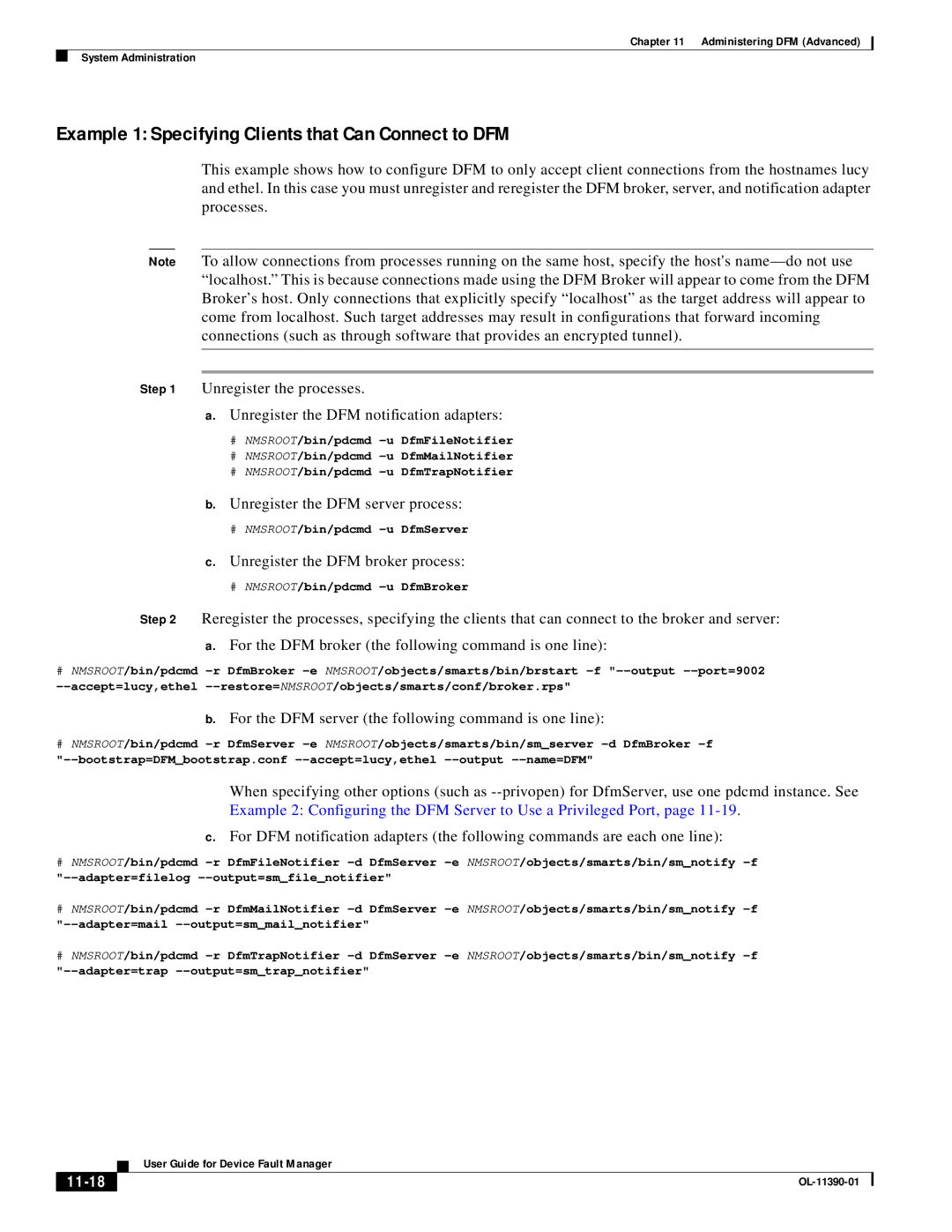Chapter 11 Administering DFM (Advanced)
System Administration
Example 1: Specifying Clients that Can Connect to DFM
This example shows how to configure DFM to only accept client connections from the hostnames lucy and ethel. In this case you must unregister and reregister the DFM broker, server, and notification adapter processes.
Note To allow connections from processes running on the same host, specify the host's name—do not use “localhost.” This is because connections made using the DFM Broker will appear to come from the DFM Broker’s host. Only connections that explicitly specify “localhost” as the target address will appear to come from localhost. Such target addresses may result in configurations that forward incoming connections (such as through software that provides an encrypted tunnel).
Step 1 Unregister the processes.
a.Unregister the DFM notification adapters:
#NMSROOT/bin/pdcmd -u DfmFileNotifier
#NMSROOT/bin/pdcmd -u DfmMailNotifier
#NMSROOT/bin/pdcmd -u DfmTrapNotifier
b.Unregister the DFM server process:
#NMSROOT/bin/pdcmd -u DfmServer
c.Unregister the DFM broker process:
#NMSROOT/bin/pdcmd -u DfmBroker
Step 2 Reregister the processes, specifying the clients that can connect to the broker and server:
a.For the DFM broker (the following command is one line):
#NMSROOT/bin/pdcmd -r DfmBroker -e NMSROOT/objects/smarts/bin/brstart -f "--output --port=9002 --accept=lucy,ethel --restore=NMSROOT/objects/smarts/conf/broker.rps"
b.For the DFM server (the following command is one line):
#NMSROOT/bin/pdcmd -r DfmServer -e NMSROOT/objects/smarts/bin/sm_server -d DfmBroker -f
"--bootstrap=DFM_bootstrap.conf --accept=lucy,ethel --output --name=DFM"
When specifying other options (such as --privopen) for DfmServer, use one pdcmd instance. See Example 2: Configuring the DFM Server to Use a Privileged Port, page 11-19.
c.For DFM notification adapters (the following commands are each one line):
#NMSROOT/bin/pdcmd -r DfmFileNotifier -d DfmServer -e NMSROOT/objects/smarts/bin/sm_notify -f "--adapter=filelog --output=sm_file_notifier"
#NMSROOT/bin/pdcmd -r DfmMailNotifier -d DfmServer -e NMSROOT/objects/smarts/bin/sm_notify -f "--adapter=mail --output=sm_mail_notifier"
#NMSROOT/bin/pdcmd -r DfmTrapNotifier -d DfmServer -e NMSROOT/objects/smarts/bin/sm_notify -f "--adapter=trap --output=sm_trap_notifier"
| User Guide for Device Fault Manager |
11-18 | OL-11390-01 |

